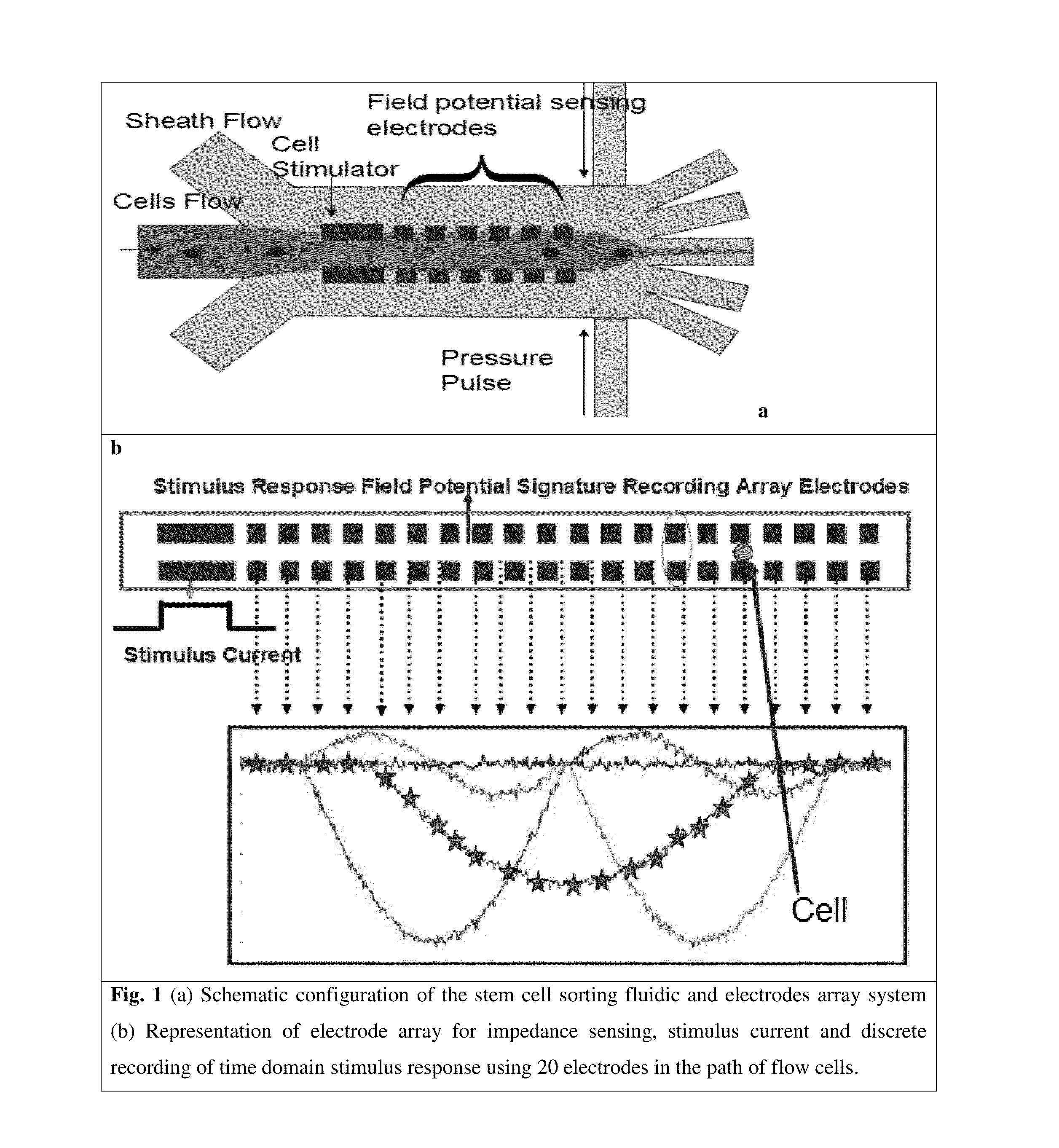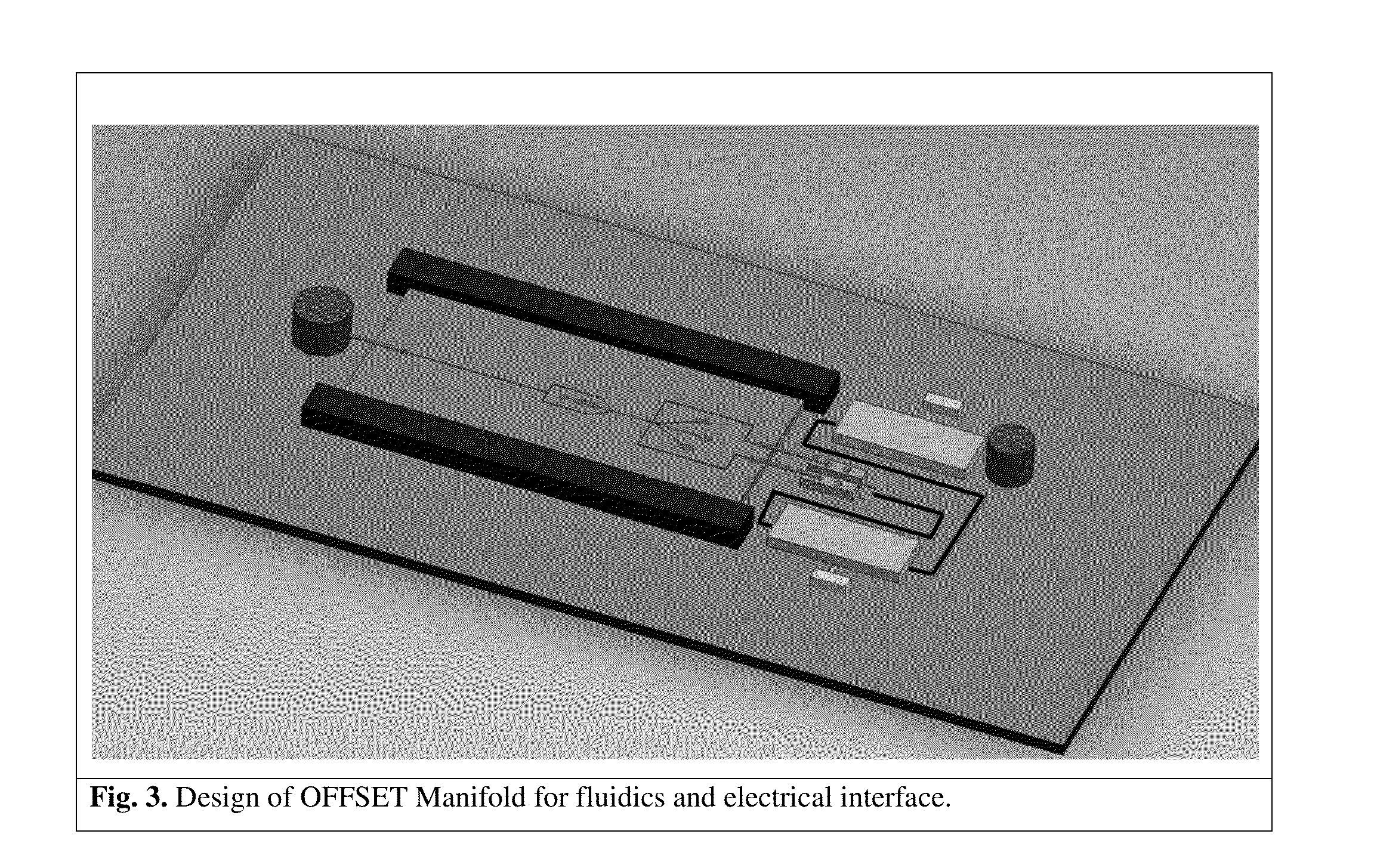Microfluidic devices and methods for cell sorting, cell culture and cells based diagnostics and therapeutics
a microfluidic device and cell sorting technology, applied in the field of medical devices and methods, can solve the problems of inability to eliminate the risk of teratoma formation, inability to use microscope-assisted manual isolation, time-consuming, laborious, etc., and achieve the effects of reducing width, high efficiency, and reducing width
- Summary
- Abstract
- Description
- Claims
- Application Information
AI Technical Summary
Benefits of technology
Problems solved by technology
Method used
Image
Examples
example 1
IPSC Sorting for Stem Cell Therapy
[0133]The derivation of patient-specific reprogrammed somatic cells makes immunologically compatible stem cell replacement strategy very attractive for several applications such as spinal cord therapy. In potential therapeutic applications, the cell populations relevant for therapy can be electrically excited and the resulting transmembrane ion currents are measured using an array of surface microelectrodes along the direction of the flow. The electrical current measurements in response to electrical stimulation for differentiated states of the cells are built up as electrical signatures for real time comparison and sorting. Since these transmembrane ion currents are measured non-invasively to sort the differentiated cells based on these field potential markers, the sorted cells are highly viable for therapeutic applications. The iPSC line to be studied will be derived from fibroblast sample SC-140 cells. These cells are maintained in StemPro medium...
example 2
Diagnostics of Cancer
[0134]The analysis of heterogeneity in individual tumor cell represents a major step in developing a precise molecular signature of a patient's cancer which leads to therapies tailored to individual patients, an important objective for new oncology drugs. At such single cell level, preamplification of the entire mRNA library to analyze a multigene reverse transcription-PCR panel without compromising the sensitivities of individual marker genes is required. Circulating tumor cells (CTCs) that circulate in the bloodstream alongside normal cells represent a “real-time” biopsy with a surrogate source of tissue in cancer diagnosis and prognosis. The inhomogeneities in the tumor cells and their flow in to blood stream require interrogation of the individual tumor cells and comparison of individual CTCs' expression levels. The ability to quantify and profile the gene expression of CTCs allows improved biological characterization of cancer diagnostics in real time and e...
example 3
Diagnostics Using Clinical Blood Samples
[0135]Diagnostics using clinical samples is important for routine and non-invasive testing of patients undergoing therapy. For example, Hepatitis C virus (HCV), is a major cause of chronic liver disease, with an estimated 200 million people affected worldwide. Despite recent success after the introduction of combination therapy with interferon (IFN)-α and ribavirin, resistance to Antiviral therapy remains a serious problem in the management of chronic hepatitis C. The absence of HCV in the serum of patients by the end of treatment, does not exclude future viremia. The most extrahepatic site for the virus is peripheral blood mononuclear cells (PBMC) and these cells are considered as a potential reservoir of HCV infection. The patient might still be a source of infection to others and so it is strongly encouraged to test for HCV in PBMC to detect lack of response to treatment and persisting infection. Ultrasensitive and specific non-invasive and...
PUM
| Property | Measurement | Unit |
|---|---|---|
| width | aaaaa | aaaaa |
| distance | aaaaa | aaaaa |
| angle | aaaaa | aaaaa |
Abstract
Description
Claims
Application Information
 Login to View More
Login to View More - R&D
- Intellectual Property
- Life Sciences
- Materials
- Tech Scout
- Unparalleled Data Quality
- Higher Quality Content
- 60% Fewer Hallucinations
Browse by: Latest US Patents, China's latest patents, Technical Efficacy Thesaurus, Application Domain, Technology Topic, Popular Technical Reports.
© 2025 PatSnap. All rights reserved.Legal|Privacy policy|Modern Slavery Act Transparency Statement|Sitemap|About US| Contact US: help@patsnap.com



